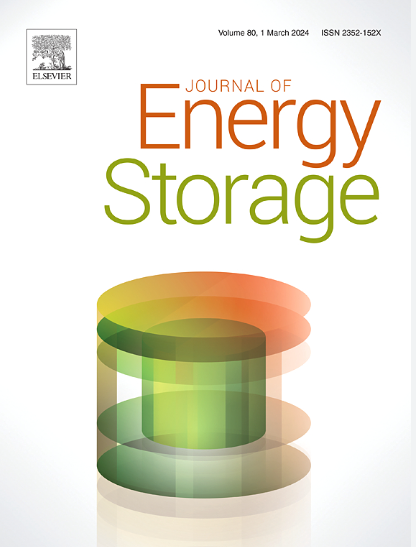Impact of hydrogen storage on the characteristics and mechanical properties of trona deposits
IF 8.9
2区 工程技术
Q1 ENERGY & FUELS
引用次数: 0
Abstract
Underground hydrogen storage (UHS) represents a promising avenue for storing excess energy for future use. To ensure the safe implementation of this technology, it is crucial to evaluate the potential alterations hydrogen might induce in the host rock. This research studied the impact of hydrogen (H2) on the mechanical properties of trona rock collected from Sweetwater County, Wyoming, USA. Twelve cylindrical specimens were prepared: three with a diameter of 25 mm and nine with a diameter of 38 mm. Specimens underwent treatment with gas compositions of 50 %H2 and 100 %H2 over two weeks, under 4 MPa of pressure and at room temperature. Scanning electron microscopy (SEM), X-ray diffraction (XRD), Brunauer-Emmett-Teller (BET) analysis, and both uniaxial and triaxial compression tests were performed. Trona specimens treated with 50 %H2 and 100 %H2 exhibited, on average, 14 % and 33 % lower triaxial compressive strength, respectively, than that of untreated specimens. However, the elastic modulus of specimens treated with 50 %H2 and 100 %H2 increased by an average of 88 % and 166 %, respectively, compared to untreated specimens. This study shows that the rock's mechanical properties and microstructure are influenced by the reaction between H2 and trona-related minerals.
储氢对氢离子沉积特征和力学性能的影响
地下储氢(UHS)是一种很有前途的储存多余能源以供未来使用的途径。为了确保该技术的安全实施,关键是要评估氢可能在宿主岩石中引起的潜在变化。本研究研究了氢气(H2)对采自美国怀俄明州Sweetwater县的trona岩石力学特性的影响。制备了12个圆柱形试样:3个直径为25mm, 9个直径为38mm。在4 MPa压力和室温条件下,将样品分别用50% H2和100% H2气体处理两周。进行了扫描电镜(SEM)、x射线衍射(XRD)、brunauer - emmet - teller (BET)分析以及单轴和三轴压缩试验。经过50% H2和100% H2处理的Trona试件的三轴抗压强度比未处理的试件平均分别降低14%和33%。然而,与未处理的样品相比,50% H2和100% H2处理的样品的弹性模量分别平均增加了88%和166%。研究表明,岩石的力学性能和微观结构受H2与trona相关矿物反应的影响。
本文章由计算机程序翻译,如有差异,请以英文原文为准。
求助全文
约1分钟内获得全文
求助全文
来源期刊

Journal of energy storage
Energy-Renewable Energy, Sustainability and the Environment
CiteScore
11.80
自引率
24.50%
发文量
2262
审稿时长
69 days
期刊介绍:
Journal of energy storage focusses on all aspects of energy storage, in particular systems integration, electric grid integration, modelling and analysis, novel energy storage technologies, sizing and management strategies, business models for operation of storage systems and energy storage developments worldwide.
 求助内容:
求助内容: 应助结果提醒方式:
应助结果提醒方式:


